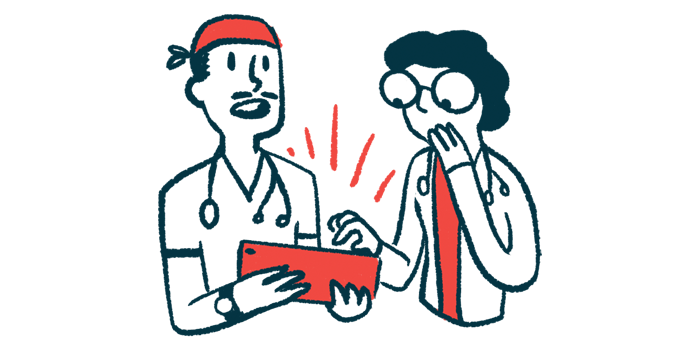Imaging technique lowers risk of hypoparathyroidism after surgery
Step-by-step way of using near-infrared autofluorescence with thyroid surgery

Using an imaging technique called near-infrared autofluorescence (NIRAF) during thyroid surgery can help to lower the risk of hypoparathyroidism as a surgery complication, a study reported, detailing a workable approach for its use.
The study, “Prevention of hypoparathyroidism: A step-by-step near-infrared autofluorescence parathyroid identification method,” was published in the journal Frontiers in Endocrinology.
Hypoparathyroidism is characterized by abnormally low levels of the parathyroid hormone (PTH). The most common cause of this hormonal disorder is damage to the parathyroid glands during surgery.
Significantly lower hypoparathyroidism rates when technique used
As their name suggests, the parathyroid glands are located in the neck right next to the thyroid gland. When surgeons are operating on the thyroid, it can be tricky to correctly distinguish between the thyroid and parathyroid. As a result, the parathyroid glands can be damaged or accidentally removed during thyroid surgery.
NIRAF is an imaging technique that uses near-infrared light to generate fluorescent signals in body tissues. This can be helpful for differentiating between different tissue types.
Scientists in China developed a protocol for using NIRAF to locate the parathyroid glands during surgery, with the goal of reducing the risk of hypoparathyroidism caused by damage to these glands. Since NIRAF cannot be performed continuously during surgery — the operating lamp must be removed during surgical exploration — the protocol involves a step-by-step process where surgeons peel back a part of the thyroid to image and operate on that section, before they move on to another section and repeat the process.
“The step-by-step near-infrared autofluorescence parathyroid identification method can be used to effectively locate parathyroid glands and protect their function,” the researchers wrote.
They conducted a prospective study involving 100 people with thyroid cancer, diagnosed at Beijing Tongren Hospital between June 2021 and April 2022, to test this protocol.
Half of these patients underwent surgery using the NIRAF protocol to identify the parathyroid glands, while the other half underwent standard surgery without the imaging technique as a control group.
The total number of parathyroid glands identified per patient was significantly higher on average in the NIRAF group (3.9 vs. 3.2). Examination of removed thyroid tissue showed that a parathyroid gland had been inadvertently removed during one of the NIRAF-assisted surgeries and nine of the standard surgeries, again a statistically significant difference.
On the day after surgery, the average PTH level was significantly higher in the NIRAF group compared with levels before the surgery, for an average PTH level of 38.1% in the NIRAF group and 20% in the control group. Mean calcium levels also were significantly higher in the NIRAF group immediately following surgery (2.22 vs. 2.15 millimol/L).
By the third day after surgery, PTH levels were within a normal range for 74% of NIRAF group patients, and 38% of those in the control group. All NIRAF group patients had normal PTH levels within a month of surgery, whereas levels tended to increase more slowly in the control group.
The overall incidence of post-surgical temporary hypoparathyroidism was significantly lower in the NIRAF group compared with controls. (34% vs. 62%). The rate of hypocalcemia, referring to abnormally low calcium levels, also was lower in the NIRAF group (36% vs. 60%).
This NIRAF-based surgical approach “has obvious advantages in terms of protecting the structure and function of [the parathyroid] glands,” the researchers concluded.







